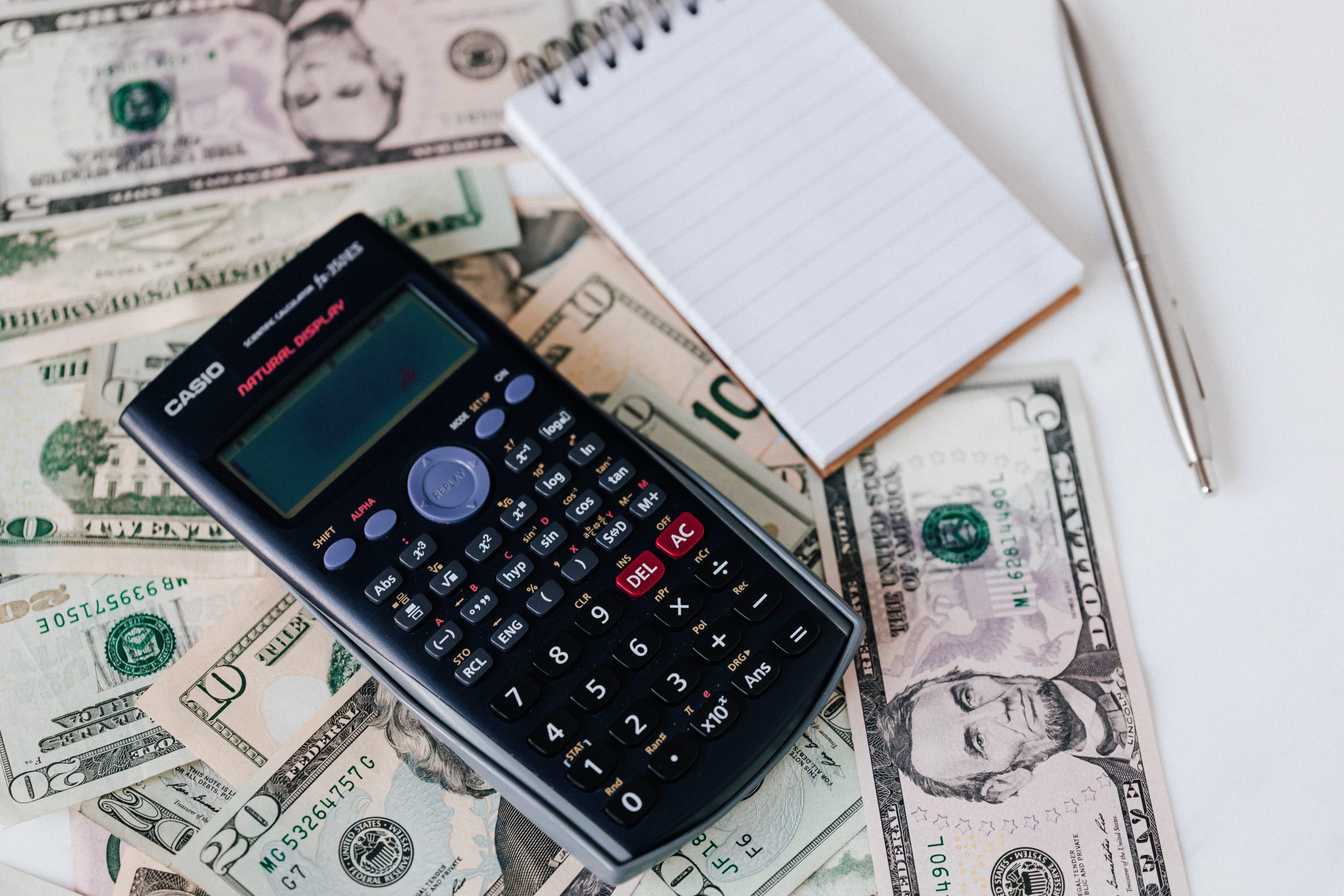Smart Money Moves: How to Make Your Money Work Harder Than You Do
You wake up. You go to work. You put in the hours. The paycheck hits your bank account. You pay the bills, maybe treat yourself, and whatever’s left over… just sits there. It’s a familiar cycle for millions of us. We’re working hard for our money, but is our money working for us?
Most of the time, the answer is a resounding no.
That money in your checking account is like an employee who shows up, clocks in, and then takes a nine-hour nap at their desk. It’s on the payroll, but it’s not doing a single thing to grow your future, build your security, or buy you freedom.
What if you could flip the script? What if you could build a team of dollar bills that worked 24/7 shifts, never called in sick, and consistently brought more money into your life, even while you were sleeping, on vacation, or simply enjoying a quiet Tuesday evening?
This isn’t a fantasy reserved for the rich. It’s a fundamental shift in mindset, available to anyone with a paycheck and a little bit of discipline. It’s about turning your money from a passive bystander into your most productive employee.
Welcome to the art of making your money work harder than you do.
The Foundation: Before Your Money Can Work, It Needs a Safe Home

You can’t start building a skyscraper on a foundation of sand. Before we talk about putting your money to work, we have to get the basics right. This is the unsexy, non-negotiable part that everything else is built upon.
- Tame the Beast: Know Where Your Money is Going.
You can’t tell your money what to do if you don’t know where it’s going. For one month, track every single dollar you spend. You don’t need a fancy app (though they can help); a simple notebook or a notes app on your phone will do. Be brutally honest. That morning coffee, the impulse buy online, the fast-food run—it all counts.
This isn’t about judgment; it’s about awareness. You’ll be shocked at where your “ghost money”—small, forgotten expenses—disappears to. This awareness is the first step toward taking control.
- The “Pay Yourself First” Revolution.
This is the golden rule of personal finance, and it will change your life. Most people pay their bills, spend on their lives, and then save whatever is left over. The problem? There’s rarely anything left over.
“Paying yourself first” flips this model. The very first “bill” you pay each month is to your future self.
As soon as your paycheck lands, automatically transfer a set amount—even if it’s just $25 or $50—into a separate savings or investment account. Then, you live on what remains. This automates your savings and forces you to be more mindful with your spending. You’re not saving what’s left; you’re spending what’s left after you’ve saved.
- Build Your Financial Airbag: The Emergency Fund.
Life is full of surprises, and not the fun, confetti-cannon kind. Your car breaks down. You need a root canal. Your laptop dies right before a big project. Without a buffer, these emergencies get paid for with a high-interest credit card, plunging you into debt and undoing all your hard work.
Your emergency fund is your financial airbag. It’s not for a vacation or a new TV. It’s purely for unexpected, necessary expenses.
- Goal: Start with $1,000. Then, build up to 3-6 months’ worth of essential living expenses.
- Where to keep it: In a high-yield savings account (we’ll get to these in a second!). It needs to be safe, separate from your checking account, and easily accessible in a true emergency.
With these three pillars in place—awareness, automated saving, and an emergency fund—you’ve created a stable, secure launchpad. Now, it’s time to send your money to work.
The Workhorse: Your Savings Account (But Not the One You’re Probably Using)

If your money is sitting in a traditional, big-bank savings account, it’s not just napping; it’s actually losing value. Why? Because of a little thing called inflation.
Inflation is the gradual rise in the price of goods and services. If your savings account pays you 0.01% interest (the national average for many big banks), but inflation is running at 3%, the purchasing power of your money is actually shrinking by about 2.99% per year. Your money is working in reverse!
The solution? The High-Yield Savings Account (HYSA).
Think of this as a regular savings account’s much more ambitious and productive cousin.
- What it is: A savings account, typically offered by online banks, that pays a significantly higher interest rate. While a traditional bank might offer 0.01%, HYSAs often offer rates that are 20, 30, or even 40 times higher (e.g., 4-5% APY as of 2024).
- Why the rate is higher: Online banks have lower overhead (no fancy branch offices to maintain), so they pass those savings on to you in the form of better interest rates.
- Is it safe? Absolutely. Just like a traditional bank, HYSAs at federally insured institutions in the U.S. are FDIC-insured up to $250,000. Your money is not at risk.
Your Action Step: This is the easiest “first job” you can give your money. Open a high-yield savings account online. This is where you should park your emergency fund and any money you’re saving for a short-term goal (like a down payment for a car or a vacation in the next 1-3 years). It’s low-risk, liquid (easily accessible), and finally, your money is earning a decent wage instead of just collecting dust.
The Power Players: An Introduction to Investing

Saving is about protecting the money you have. Investing is about growing it. This is where your money can really start running marathons for you.
Investing can feel intimidating. The stock market seems like a chaotic casino for rich people. But at its core, investing is simply about becoming a part-owner of companies (or other assets) and sharing in their success.
Let’s break down the key players.
- The Stock Market: Owning a Piece of the Pie.
When you buy a stock (or a share), you are buying a tiny, tiny piece of a company. If that company does well and becomes more valuable, your piece becomes more valuable too. You can make money through the stock price going up (capital gains) or through the company sharing its profits with you (dividends).
Yes, stock prices go up and down in the short term. But over the long term—decades, not days—the overall trend of the stock market has historically been up. You’re not betting on a single horse; you’re betting on the entire concept of economic growth.
- The Bond Market: Becoming the Bank.
When you buy a bond, you are essentially loaning money to a company or a government. In return, they promise to pay you a fixed interest rate over a set period and then return your initial investment at the end. Bonds are generally considered less risky and less volatile than stocks, but they also offer lower potential returns.
Think of it this way: Stocks are for growth, bonds are for stability. A healthy financial plan usually has a mix of both.
- Funds: The “Don’t Put All Your Eggs in One Basket” Solution.
You’ve heard the phrase. It’s the golden rule of investing. But how can a regular person with a few hundred dollars buy tiny pieces of hundreds of different companies? Enter the magic of funds, specifically Index Funds and ETFs (Exchange-Traded Funds).
Instead of you trying to pick which individual companies will win or lose, you buy a share of a fund, and that fund itself holds small pieces of hundreds of companies. For example, an S&P 500 index fund holds a tiny piece of the 500 largest companies in the U.S.—Apple, Microsoft, Amazon, etc.
- It’s Instant Diversification: If one company in the fund has a bad year, it’s balanced out by the others. You’re betting on the entire American (or global) economy, not on a single company’s genius or failure.
- It’s Simple and Low-Cost: These funds are typically “passively managed,” meaning a computer just automatically tracks the index. This makes their fees (called expense ratios) very low, which means more of the returns end up in your pocket.
For 99% of people, a simple portfolio of low-cost index funds is the most effective, stress-free way to invest for the long term.
Your Game Plan: Putting It All Together

Okay, you have the pieces. Now, let’s build a simple, powerful system.
Step 1: Fund Your 401(k) Match – It’s Free Money.
If your employer offers a 401(k) retirement plan with a company match, this is your number one, non-negotiable priority. It is the highest-return, lowest-risk investment you will ever make.
Here’s how it works: Your company might say, “We will match 50% of your contributions, up to 6% of your salary.” If you earn $50,000 and you contribute 6% ($3,000), your company will kick in an extra $1,500—for free! That’s an instant 50% return on your money before it’s even invested. If you don’t take this, you are literally leaving free money on the table.
Step 2: Open an IRA – Your Personal Retirement Powerhouse.
An IRA (Individual Retirement Account) is a tax-advantaged account you open for yourself. It’s not an investment itself; it’s a special “bucket” or “wrapper” that holds your investments (like stocks and funds) and gives them special tax treatment.
- Traditional IRA: You contribute money before it’s taxed (it’s “tax-deductible”), it grows tax-free, and you pay taxes when you withdraw it in retirement.
- Roth IRA: You contribute money you’ve already paid taxes on, but then it grows completely tax-free, and you can withdraw it tax-free in retirement.
For most young people or those expecting to be in a higher tax bracket in retirement, the Roth IRA is a phenomenal tool. You can contribute up to a certain limit each year (check the current IRS guidelines).
Step 3: Automate Your Investments.
Remember “paying yourself first”? Apply that here. Set up an automatic transfer from your checking account to your investment accounts (like your IRA) right after each paycheck. Then, within that account, automatically invest that money into your chosen low-cost index funds.
This does two incredible things:
- It makes investing mindless and consistent.
- It employs a powerful strategy called dollar-cost averaging. Sometimes you’ll buy when prices are high, sometimes when they’re low. Over time, this averages out your purchase price and removes the stress and danger of trying to “time the market.”
Beyond the Basics: Other Ways to Put Your Money to Work
Once you’ve mastered the core system, you can explore other avenues.
- Tackle High-Interest Debt: If you have credit card debt with a 20% interest rate, paying that off is a guaranteed 20% return on your money. No stock or fund can reliably offer that. This is often the highest-priority “investment” you can make.
- Explore Real Estate (Indirectly): You don’t need to be a landlord to invest in real estate. REITs (Real Estate Investment Trusts) are companies that own and operate income-producing real estate, like apartment buildings or shopping malls. You can buy shares of REITs just like stocks, giving you exposure to the real estate market without the hassle of fixing a toilet at 2 a.m.
- Invest in Yourself: This is perhaps the most overlooked “smart money move.” Using money to take a course, learn a new skill, get a certification, or start a side hustle can have a massive return on investment by dramatically increasing your earning potential.
The Mindset Shift: From Spender to Owner

All these tactics are useless without the right mindset. This journey is about a fundamental shift in identity.
- From Consumer to Creator: Stop seeing yourself primarily as a consumer of goods and start seeing yourself as a creator of your future.
- Embrace Delayed Gratification: The ability to resist a small, immediate reward in favor of a larger, future reward is the superpower of wealth building. It’s choosing a secure future over a fleeting pleasure today.
- Think in Decades, Not Days: The stock market will have bad years. Your portfolio will sometimes drop in value. This is normal. The key is to not panic and sell. Remember, you’re a long-term owner, not a short-term gambler. Time in the market is more important than timing the market.
The Payoff Is More Than Just Money
When you start making your money work for you, something incredible happens. The anxiety about the future begins to fade. A sense of calm and control takes its place. You start to feel… free.
You’re no longer entirely dependent on your next paycheck. You’re building a system that provides for you. This financial security gives you options. It gives you the power to walk away from a job you hate, to take a risk on a new career, to work part-time to spend more time with your family, or to retire one day with dignity.
You stop trading your life’s energy, hour by hour, for dollars. You start building a machine that generates that energy for you.
So, start today. Open that high-yield savings account. Check your 401(k) match. Set up an automatic transfer for $25. Do one small thing to put your first dollar on the payroll.
Because the ultimate goal isn’t just to be rich. It’s to be free. And your money, that sleepy employee, is ready to start working overtime to get you there.


